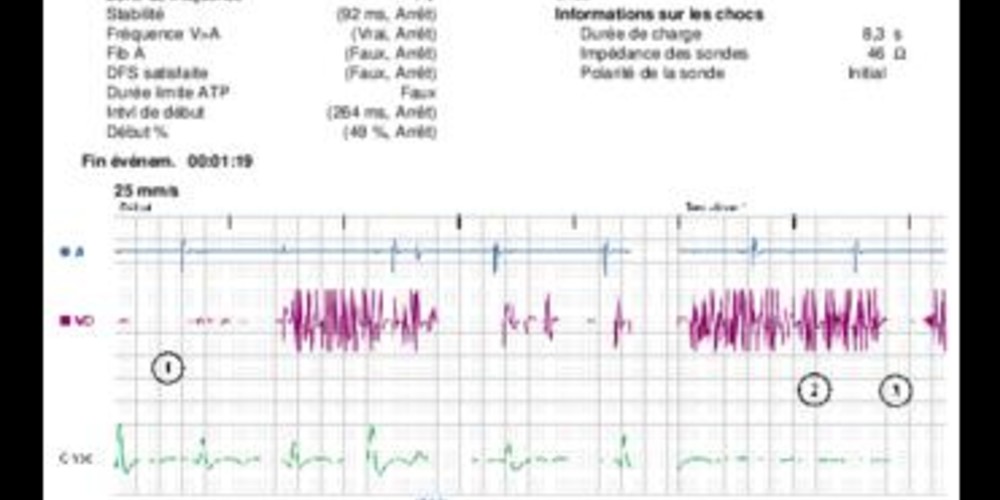Lead fracture
Tracing
Manufacturer Boston Scientific
Device ICD
Field Sensing
N° 4
Patient
This 82-year-old man underwent implantation of a Boston Science Cognis triple chamber defibrillator in the context of severe ischemic cardiomyopathy with left bundle branch block; he was seen in consultation after a shock perceived during effort, while gardening; an alert was delivered by remote monitoring (Latitude).

Graph and trace
Tracing
- sinus rhythm with biventricular stimulation;
- oversensing of a rapid ventricular signal (sensing channel) invisible on the high-voltage channel; very rapid, irregular signals, of variable morphology; some high-amplitude signals saturate the amplifiers (truncated signals); cycles were detected in the VT and VF zones and others were sensed by the noise detection algorithm (RVN);
- 8 out of 10 criterion fulfilled (V-Epsd);
- end of the Duration (VF zone);
- burst of stimulation (Quick Convert) with intermittent capture;
- persistence of oversensing and onset of the charge of the capacitors;
- end of the charge;
- persistence of oversensing and electrical shock delivered;
- as a confirmation, the 8 out of 10 criterion is no longer verified despite the persistence of intermittent oversensing.
Other articles that may be of interest to you







This tracing is characteristic of a lead fracture; oversensing of very rapid signals is present, with very short cycles, approaching the ventricular refractory period, of variable morphology and intermittent throughout the cardiac cycle. The amplitude of some signals is very high, saturating the amplifiers. These fracture potentials are highly suggestive of lead fracture with probable rupture of the conductor instead of an insulation breakdown.